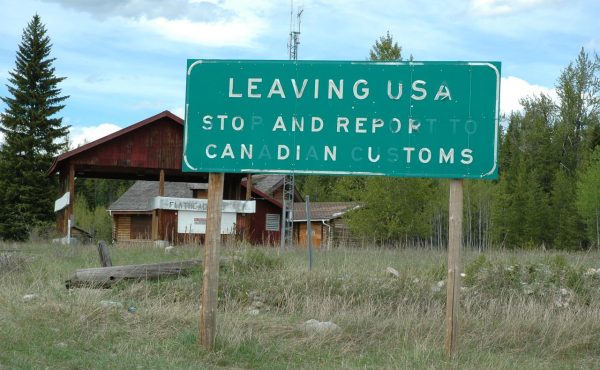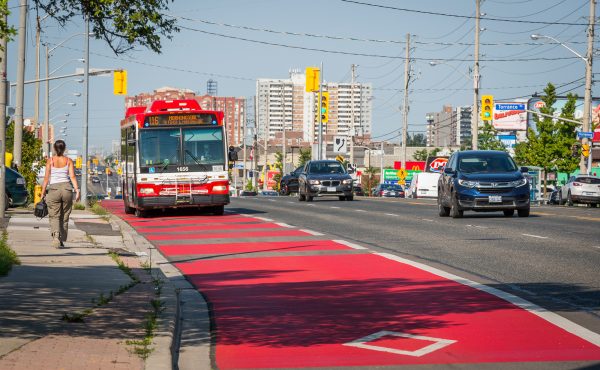
One of the more curious differences between the powers of American and Canadian cities has to do with the former’s ability — and willingness — to impose minimum wage rules on employers doing business within municipal boundaries.
According to the University of California Berkeley Labour Centre, some 39 cities have taken this step, including high immigration regions, like Los Angeles (both city and county), Chicago (same), Washington D.C., and Seattle (city and region). The move by cities to boost their minimum wages has gained momentum, in fact, and now extends to more unlikely places, like St. Louis which had to go to court to defend its own hike, up to $10.
Anyone who’s followed the minimum wage/fast-food organizing fights of recent years will also know that some U.S. mayors have made it their political mission to increase the rates as a means of boosting incomes among the most vulnerable people living in their cities – those doing shift work in the service/food-service sector, and holding multiple jobs, i.e., the “precariat,” to use the word that’s been coined to describe this segment of post-industrial urban society.
Here, of course, provincial governments have never ceded, or been pushed to cede, this particular authority to municipal governments, as Ontarians were reminded when Premier Kathleen Wynne introduced legislation that will phase in increases to the minimum wage over the next two years.
In some ways, it makes sense for the province to protect their regulatory turf; if the rules apply everywhere, the boundary disputes don’t come into play, as happened over two decades ago when some 905 municipalities began slashing their commercial property tax rates to lure businesses out of the 416 (it worked).
At the same time, the Liberals’ move serves as yet another reminder of municipal impotence in key domains, and explains the failure of over-sold social policy promises, such as Toronto’s anti-poverty campaign or Mayor John Tory’s pledge to reduce youth unemployment. Unless cities can get their hands on the levers that really matter – and setting minimum wage is one – then there’s little they can do to move the needle when it comes to poverty in low-income inner city areas.
The government’s plan seems moderate enough – the hikes aren’t being rushed into place, so the inevitable tales of woe from the usual suspects, especially the restaurant and food service sector, should be taken with more than a few grains of salt.
A 2016 study by the National Employment Law Project in the U.S. looked at the impact of federal minimum wage hikes between 1938 and 2009 and found no correlation between increases and job losses, even in sectors most affected by such policies. “To the contrary,” the authors note. “In the substantial majority of instances (68%) overall employment increased after a federal minimum-wage increase. In the most substantially affected industries, the rates were even higher: in the leisure and hospitality sector employment rose 82% of the time following a federal wage increase, and in the retail sector it was 73% of the time.” (thanks to University of Toronto sociologist David Hulchanski for this link.)
So while this proposed change — plus several of the other reforms in the Liberals’ package, including more scrutiny of flexible scheduling — point towards improved circumstances for that portion of the labour force working at the bottom of the wage scale, I’d suggest no one get completely comfortable with the Liberals’ minimum wage play just yet.
There is, of course, the obvious political calculation here: Wynne’s popularity is very low, and the Liberals are acting like a government that’s looking to shore up its many exposed flanks with specific constituencies. If Patrick Brown’s Tories win, they’ll almost certainly ice much of this legislation, including the last two tranches of the minimum wage hikes (to $15 as of January, 2019, and increases tied to inflation thereafter).
But it’s also well worth watching the ongoing machinations involving the federal government’s Temporary Foreign Worker Program (TFW), which generated a bolus of controversy for Stephen Harper’s Conservatives in 2012 back when details surfaced about the over-use and misuse of a policy meant to serve as a recruitment tool of last resort. In particular, fast food chains and other food service establishments were making heavy use of hiring TFWs at below-market wages.
In the face of a deluge of embarrassing media revelations, the Tories backtracked, implementing in 2014 a series of changes that reduced the overall numbers, added more cost for employers seeking to bring in TFWs and banned the practice of “wage suppression” for TFWs. According to a recently released federal audit of the program, the number of TFWs admitted under the low-wage category fell from almost 80,000 in 2012 to just under 11,000 in 2015.
But the TWF policy has been in play since the Trudeau Liberals took office. A parliamentary committee weighed in last year with a big report, and finance minister Bill Morneau offered more changes in the proposed 2017 federal budget.
The budget’s policy shifts reflect other (and mostly worthy) federal preoccupations – expediting visas for high-tech workers in response to the chilly climate for foreigners in Donald Trump’s America, and significantly easing previous restrictions on the path to permanent resident status for TFWs who want to remain in Canada after the four-year period of the work visa expires.
Yet the federal auditor-general’s report, issued in mid-May, was sharply critical of ministry management of the program, and highlighted the fact that federal officials administering applications often took at face-value employer explanations for why they needed to hire abroad.
As the report states, “We found that in some cases, Employment and Social Development Canada approved applications for temporary foreign workers even when employers had not demonstrated reasonable efforts to train existing employees or hire unemployed Canadians, including those from under-represented groups.” (The feds have yet to reply.)
Given Ontario’s move to up the minimum wage and tighten labour standards, it seems likely that powerful industry groups, like Restaurants Canada, will up the pressure on the feds to offer concessions, such as relaxed caps on the number of TFWs working in an establishment or the overall number of permits issued.
The point is that it’s not impossible to imagine the conditions that would lead to a kind of claw-back, with general gains advanced by the provincial Liberals offset by the fruits of a targeted but low-profile lobbying effort directed at the feds. While employers can no longer pay TFWs less than Canadian employees for similar or identical work, any easing of the TFW restrictions in favour of employers could make it that much tougher for those looking for minimum wage jobs.
The Trudeau government’s moves on the TWF file have been mostly encouraging, but the policy ball remains in play. Tens of thousands of low-wage service sector workers in Greater Toronto, many of them newcomers or young people, could be directly or indirectly impacted by the outcome. The onus is on Wynne’s people to make dead certain that her more business-friendly cousins in Ottawa don’t quietly undermine the important step she took this week.





3 comments
An employer who can only make a business work by underpaying staff has a flawed business model.
Yeah, there’s something to that, Roy.
Squeezing staff wages is a pretty bad business model overall. How much can be squeezed out of the lowest paid people anyhow, right?
Who you do business with is part of the product you get– and, as the saying goes, you get what you pay for.
When I buy something, I tend to think of the product as not just the object, but a set of relationships with people and as something with good and bad consequences for those people (and me).
Interested in reading more about precarious work? Have a look at this blog posted by the Toronto Reference Library last year:
http://torontopubliclibrary.typepad.com/trl/2016/04/precarious-work.html